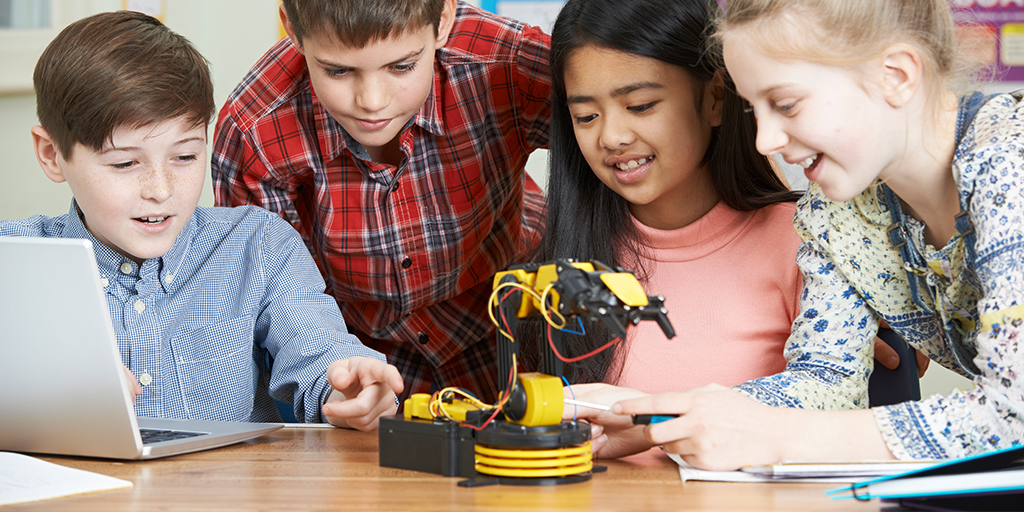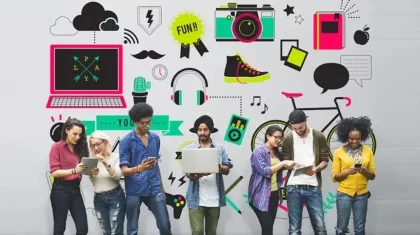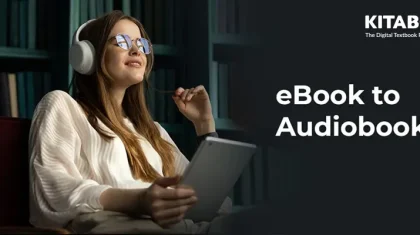
Top 7 Innovations in K-12 Education (2025)
The education sector has seen transformative changes over the past decade, primarily through the integration of digital aids into classrooms. This evolution aims to enhance the teaching and learning experience in schools and universities. The adoption of innovative teaching methods and technologies has been pivotal in fostering a deeper understanding of subjects among students and improving classroom engagement.
Top 7 Innovations in K-12 Education -
1. Flipped Classroom Approach:
This model reverses traditional learning by having students study materials at home and engage in assignments and discussions in class. It utilizes digital content like video lectures and interactive eBooks to foster a more engaging and practical learning environment, encouraging active participation and collaboration.
2. Audiobooks and Dictation Software:
These tools support students with disabilities or those looking to improve language skills. Audiobooks enhance vocabulary and comprehension through auditory learning, while dictation software assists those unable to write or type, making learning accessible to all.
Also explore: Digital Publishing Platform for Association and Societies
3. Digital Content Libraries:
4. Social Media for Collaborative Learning:
Leveraging social media platforms facilitates collaboration and interaction among students and teachers, fostering a supportive educational community. It enables sharing, discussion, and feedback outside the traditional classroom setting.
5. Simulation Games:
These digital simulations offer virtual scenarios that mimic real-life situations, enhancing understanding and application of concepts in a risk-free environment. They promote problem-solving and critical thinking skills through experiential learning.
Guide:
How to Build an eBook Store
6. Augmented Reality:
AR adds digital overlays to the physical world, making learning interactive and fun. VR offers immersive experiences, transporting students to different settings, such as historical sites or scientific explorations, without leaving the classroom. Both technologies provide dynamic and engaging ways to grasp complex subjects.
7. Virtual Reality:
Virtual reality goes a level beyond augmented reality. It not only displays enhanced visuals, but makes the user believe that they are present in different world altogether. Virtual reality replaces the physical world with a digital experience. This technology is best used to show places of geographical or historic importance. Instead of arranging a field trip for the students, teachers can make them wear head mounted displays which gives them a view of the real location.
Although the equipment used for virtual reality display might be a little costly, you get to provide your students an immersive learning experience which will benefit them. Teach them about the pyramids of Egypt, show them the interiors of the pyramids without stepping out of the classroom.
This style of teaching helps students to grasp concepts more effectively and retain the information. With 3D visuals and audio, the wearer of the VR display would be transported to an artificial world, providing a highly sensory experience.
The recent years have seen many innovations in the field of technology. A lot of these innovations can be leveraged effectively in K-12 education. Today, the curriculum is designed in such a way that the concepts that are taught can be applied not only in classrooms but also in real-lives. K-12 students now have the opportunity to explore and enhance their knowledge with multiple digital resources to support them in their learning journey.
Educational institutes are incorporating the top trends in technology in order to improve the way subjects are taught as well to enhance the learning experience. By using multiple digital techniques that can provide an intuitive and immersive learning experience, you can provide the best opportunities for effective learning.
Key Takeways
- The integration of digital technologies in education, such as flipped classrooms, audiobooks, and AR/VR, has significantly improved engagement and learning outcomes.
- These innovations cater to diverse learning needs, making education more accessible and inclusive.
- By leveraging digital content libraries and social media, educators can offer a more interactive and collaborative learning experience.
- Simulation games, AR, and VR provide practical, immersive experiences that enhance understanding and retention of subject matter.
- The continuous adoption of technology in education is pivotal in preparing students for a digital future, equipping them with the necessary skills and knowledge for real-life applications.
The evolution of educational technologies not only enriches the learning experience but also prepares students for the challenges of the modern world, making education a more effective, inclusive, and engaging process.
Suggested Reads:
- Fixed layout vs Reflowable layout
- Top 10 Corporate Training & Development Trends
- 10 Best Andriod ePUB Readers
- Difference between WCAG, Section 508 & ADA
- What is Digital Reading?
- How to Create Interactive Employee Training Modules
- Advantages of eBooks Over Printed Books
- Trends in Education Technology
- ePub for Education
- K12 Publishers
- Associations & Societies
- Trade Publishers
- Training Companies
- Content Aggregators
Discover how a mobile-first training platform can help your organization.
KITABOO is a cloud-based platform to create, deliver & track mobile-first interactive training content.




